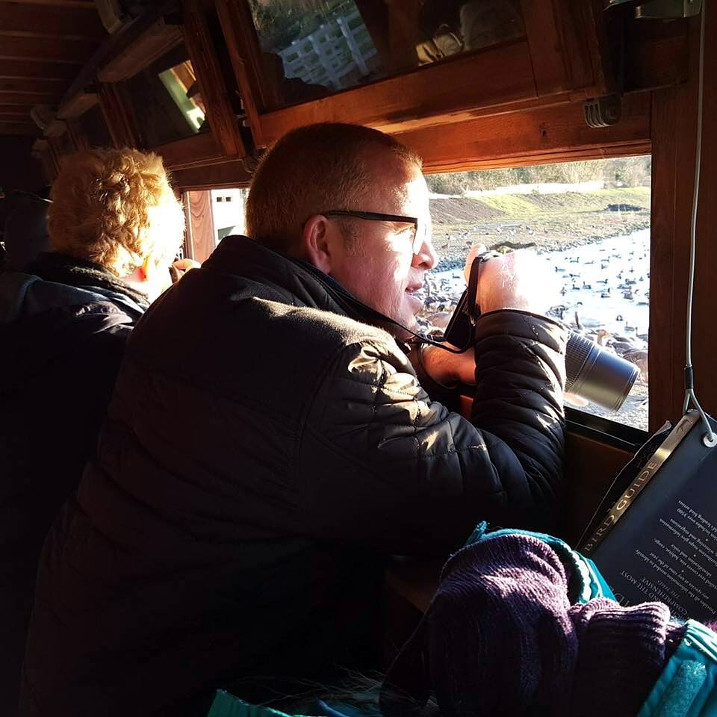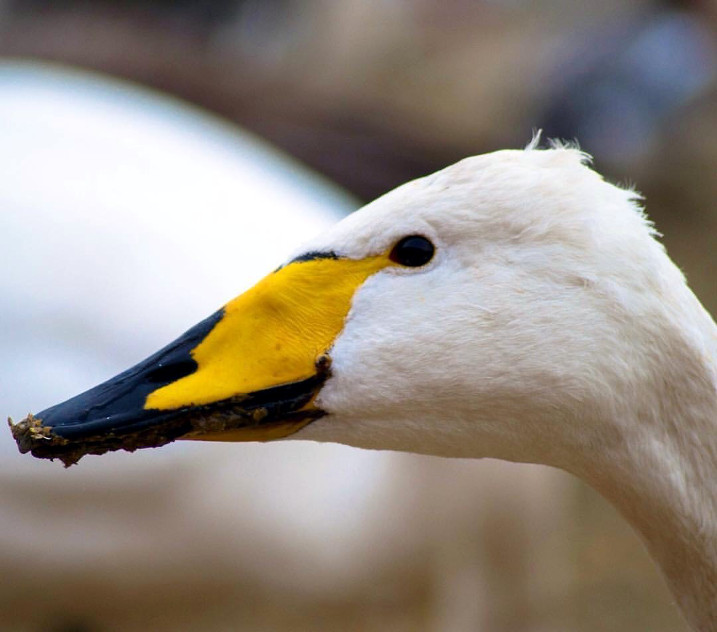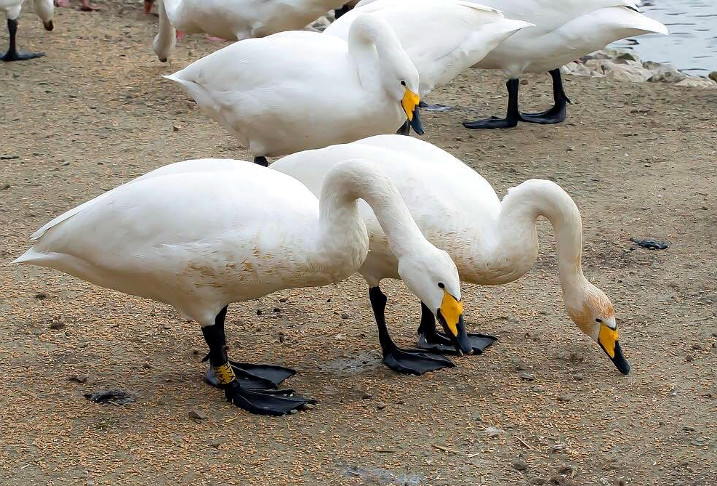Super whoopers
I am Damien and I've been lucky enough have been asked to give you a round up of the recent whooper swan season at Martin Mere. First a bit of background on myself. Well the first thing is that I am an autistic guy who along with my partner Emma, has been volunteering at Martin Mere Wetland Centre for three years. My role at Martin Mere is a Media Volunteer and Health and Safety Administrator. But my passion is whooper swans! From the moment I walked into Martin Mere in 2012, I fell hook line and sinker for the charm of this breath-taking, magnificent species.
Each year is a countdown for me, almost wishing my life away, waiting and watching for news on the first arrivals from Iceland. The sheer physical endurance that these whooper swans need to complete their migrations is utterly mesmerising to me. I literally picture in my mind thousands of whooper swans gathered in south-east Iceland ready and awaiting the optimal moment to make for the UK. I have all these thoughts. Will they be ok? What must they be thinking as they fly out to sea? Do they get scared? It seems like a lot of questions. But they choose us and the UK and Ireland and WWT.
When they eventually get here, it's so special, I'm crazy it's like Christmas Day! You wait so long and you get the email. Ten birds, twenty birds… It doesn't matter how many birds turn up in the first instance - I settle for any at all. Because you just want to know if any of the birds are ringed and then we can identify them. Really though, I am looking for old friends. Birds that migrate to and from Martin Mere each and every winter.
Every winter, Martin Mere can host upwards of 2,000 whooper swans, with higher numbers recorded in the coldest of winters. However, the 2016/17 season was a little different to previous migrations we have experienced with only around 1,500 swans visiting. Our first four whoopers arrived on 1st October. These were not related birds and what we call “Non-Breeders”. I was so excited when I heard the news that the awesome mighty whoopers were back! Better than Christmas, better than anything in the world. So we dashed off on the next train from Bolton to Burscough, then a quick taxi over to the reserve and nothing. They had already flown! Over the years of being with the WWT, we have learned that timing is key.

Over the next couple of weeks that followed they still kept giving me and my partner Emma the slip. Whoopers are nothing if not mysterious. The 22nd of October was an amazing day. Three hundred whoopers had arrived on the reserve - what a lovely total for our first “Swan-fall”. One of the researchers had received some warning that a large number of birds had arrived in northern Scotland. So then it was only a matter of time before the first birds arrived in Lancashire. And so they did. When you get word that a large number of whoopers have arrived, you can only wish that man could fly so you can get to the reserve to see which of your friends have arrived back first.
Now let me explain, I am not a Swan researcher, although I'd give anything to be one. I am a Health and Safety Administrator and Volunteer Photographer and I am also a guy with autism. This I am telling you because I feel the combination fuels my passion and love for these magnificent whooper swans. Everyone with autism has a passion that very often turns into obsession, a subject if you like, that you eat sleep live and breathe. I am no different. Whoopers make the world calm for me. You just have to go and see your friends. Our first family spot was a bird that I am personally familiar with which was a female whooper swan ringed X3U. The previous year I was X3U's handler at the Swan Catch. Such a joy to see a whooper that is so familiar fly to and from Iceland and come back with a family, all safe and sound. Myself and my partner have always been fascinated by the named ringed whoopers, the birds with a long and detailed story behind them.
As I said at the beginning of the piece, the season was different to the one we know and love, because so many of our recognised birds just didn't arrive back. The most notable absentee was a three year old female ringed XLM, known to staff and volunteers as Ruby. Ruby was ringed XLM for the 40th Anniversary of Martin Mere's opening. For a minute you wonder what has happened. But then she wasn't the only absentee, and it wasn't an ordinary winter. We had a milder than average autumn leading into winter, which meant that the food supply in Scotland was plentiful for longer and the swans had more choice – there were record breaking numbers in Scotland. But commitment is the name of the game and we eventually found our superstars of the winter. Sheila (T34), ringed in 1999, has never ever missed a winter and is considered to be one of Martin Mere’s main visiting whooper swans. Next was the lovely Martina (56F), again another long term visitor to Lancashire. I remember photographing PD5 as a cygnet and here she is three years later.

Speaking for myself though, I have to say I totally love the whooper swans with Icelandic names, names that make me literally feel in awe because they mean something, the spirit of Iceland and its wonderful nation and people. A very special country.
Talking of the Icelandic swans with Icelandic names, I just have to speak about Sigrunn, probably WWT Martin Mere's most famous whooper swan. Sigrunn is a thirteen year old male whooper swan that in 2009 was fitted with a GPS satellite transmitter. You see, I am interested in their lives beyond WWT Martin Mere. Picture Sigrunn’s spring migration: Sigrunn reached southern Scotland on 5th March 2009 at 10am. He stopped in western Scotland on 6th March and the next day he attempted a sea crossing but had to turn back due to bad weather. He eventually set off on 9th March, arriving in Iceland at 10pm the very next day. Just in time for a well-earned rest and a drink. 550 miles in 24 hours is astonishing. You can't really find the words to admire their powers of endurance.
Back to last winter though. Sigrunn was fairly mysterious as usual. When we finally glimpsed him, we discovered he had a mate which certainly set off the camera shutter buttons we can tell you! We spent many a day, freezing in the same hide for four hours at a time just waiting for a chance to see and photograph him. And it paid off. Easily the moment of our winter, a WWT Super Whooper Swan legend came to see us, and that's how it felt - special and personal. By around the third week of March the whooper swans had all gone.
We might have peaked at only around 1,500 swans last winter but they are all special flying angels. For me, when they go it's like watching your kids go back to school after the holidays. I am not sure if this is me and autism, it probably is, but equally I love these birds as does my partner. You have a massive void to fill at this time of the year, but that's ok. You live with that. That's what comes from giving everything to study, follow and care about our migrating whooper swans each and every season at WWT.


